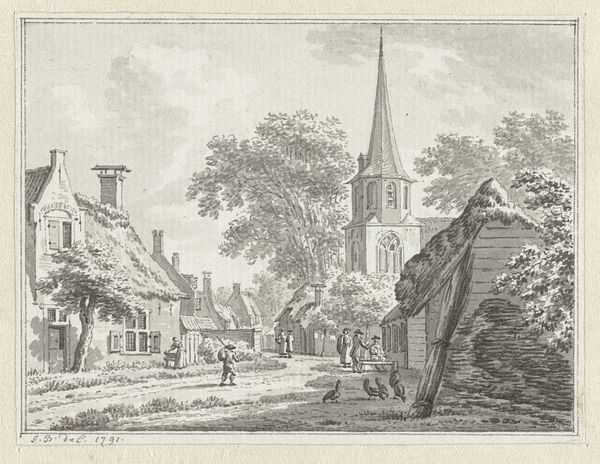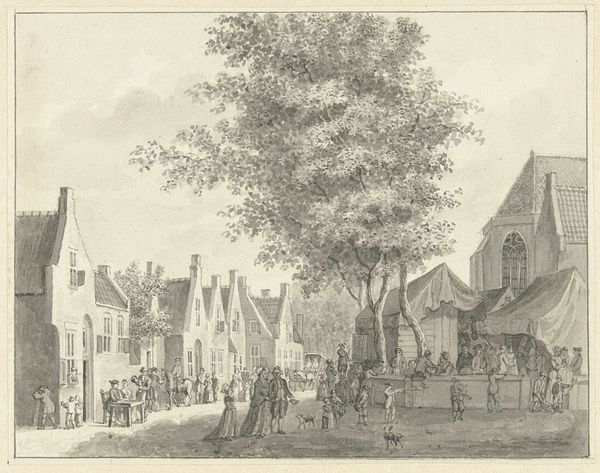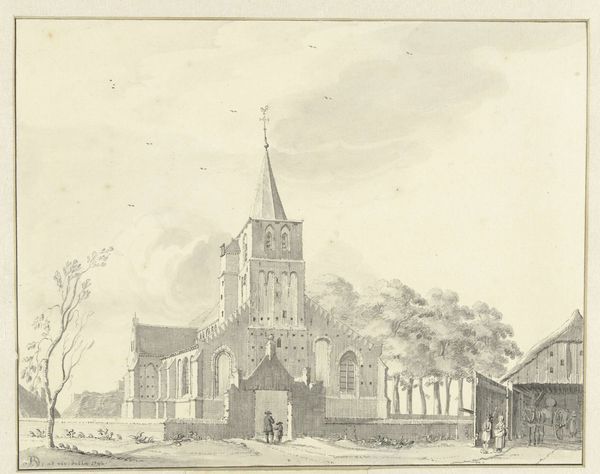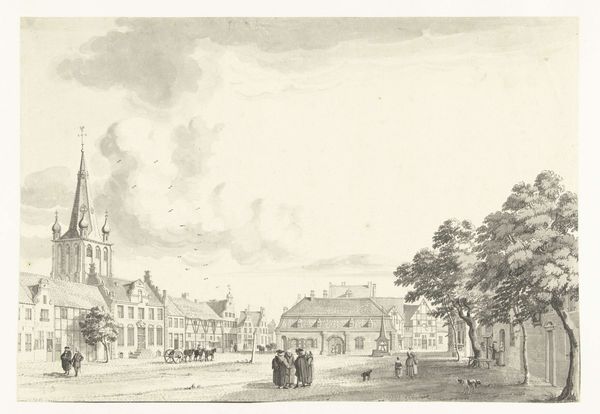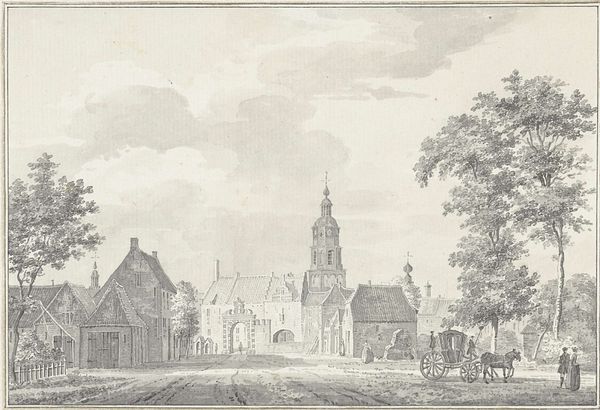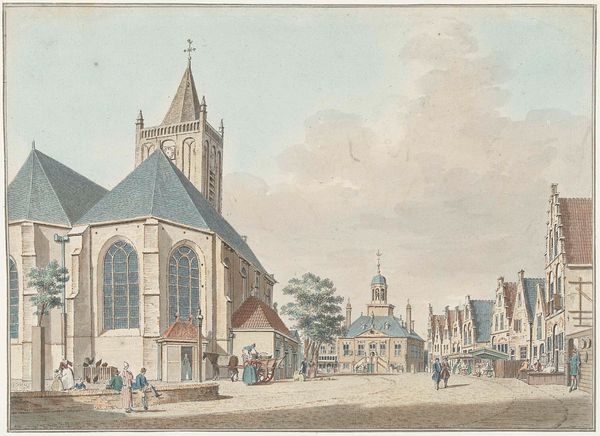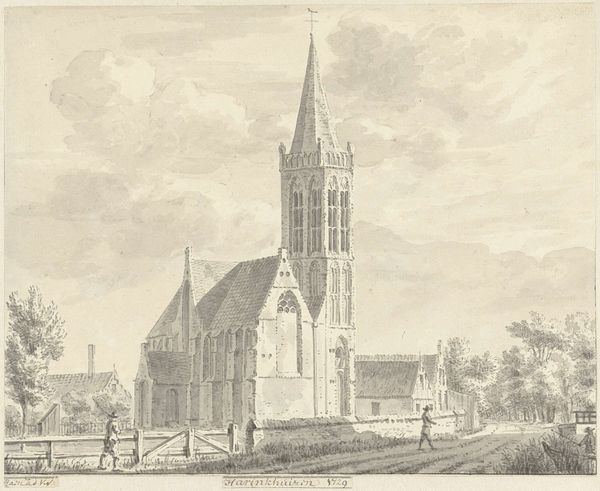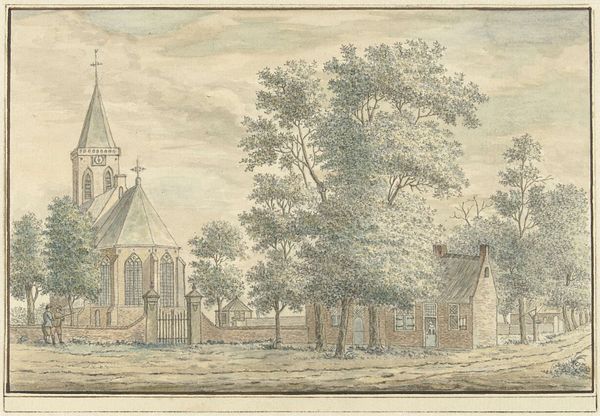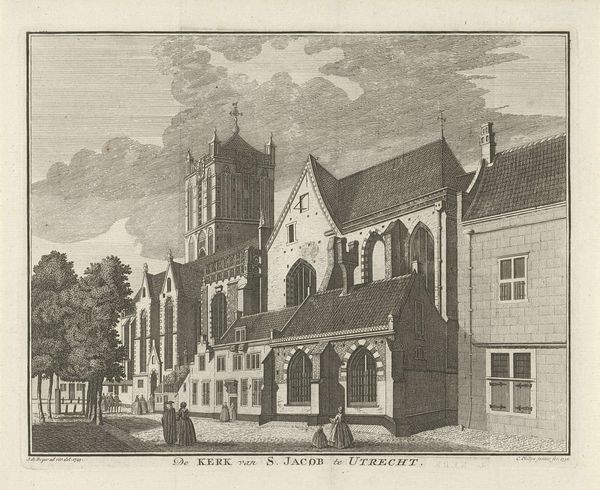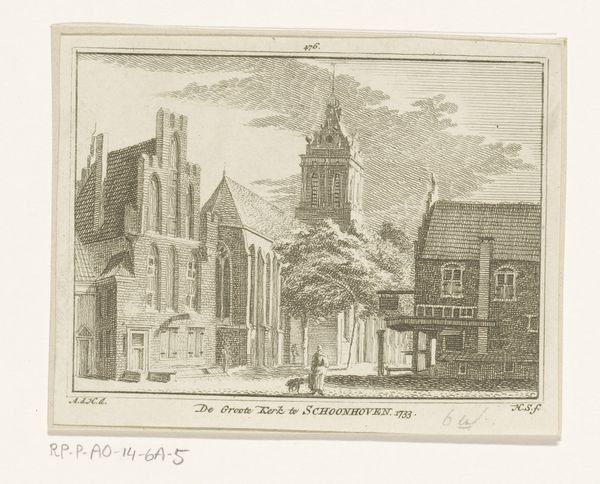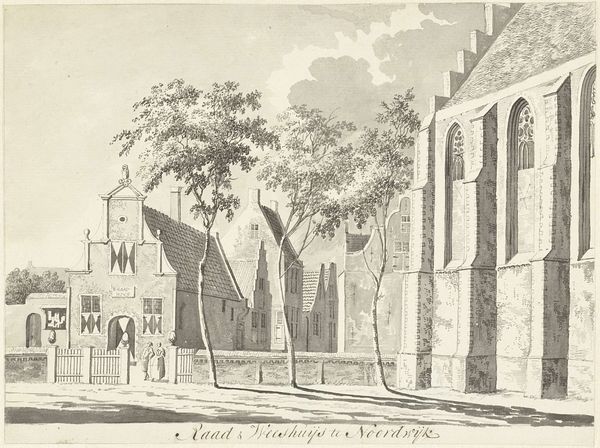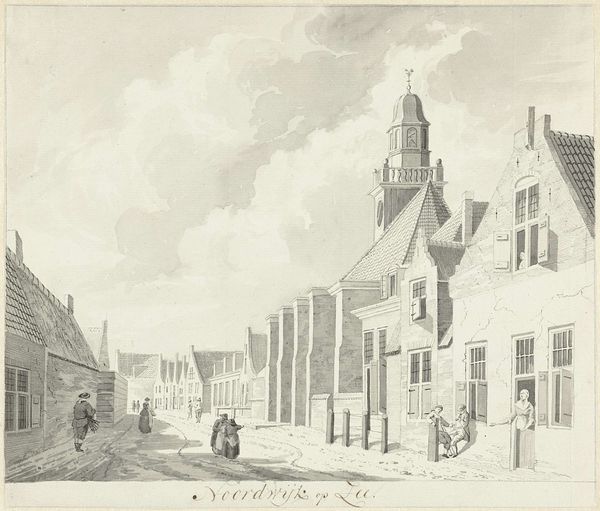
painting, watercolor
#
baroque
#
painting
#
landscape
#
watercolor
#
cityscape
#
genre-painting
Dimensions: height 150 mm, width 192 mm
Copyright: Rijks Museum: Open Domain
Curator: This watercolor on paper, titled "Hazerswoude," was completed by Cornelis Pronk around 1731 and currently resides here at the Rijksmuseum. The delicate rendering evokes a peaceful town scene, wouldn’t you agree? Editor: It feels very muted. Grey skies, pale washes. The material qualities give a certain austerity to everyday life in the scene; there’s a church on one side, modest row houses on the other. It's almost…monochromatic? Curator: Perhaps that subdued palette serves to highlight certain figures and compositional elements. Look at the way Pronk depicts that prominent church tower – its height emphasized by being on the left, as well as figures walking in front. To me, it seems Pronk wanted to convey the significance of the church as the heart of community. Editor: Yes, but consider also that it’s framed against, and perhaps balanced by, the architecture of ordinary life – the craftsman visible working on a rooftop down the street. And if we look closer, it's less monochromatic, as there’s delicate use of washes to denote specific materials such as the difference in the colors of different brick works in different structures Curator: Interesting point! The artist gives just as much detail to people doing normal activities of the era like roofers repairing homes, suggesting labor plays as vital role as worship in shaping our social structures and towns! Editor: The materiality makes it compelling. Knowing that the labor of making art involved things like hand-ground pigments gives this kind of townscape a certain gravity too; its visual lightness is actually created through intensive means. Even its ‘landscape’ categorization masks, to a modern eye, how structured are lives of those portrayed. Curator: Well, Pronk was commissioned by elites, after all, suggesting consumption of labor may indeed by masked as genre painting, while the visual impact is on picturesque landscapes. It’s fascinating to reconsider this calm little townscape from the 18th century. Editor: Precisely. There's so much encoded in seemingly simple visuals about 18th century social relations.
Comments
No comments
Be the first to comment and join the conversation on the ultimate creative platform.
